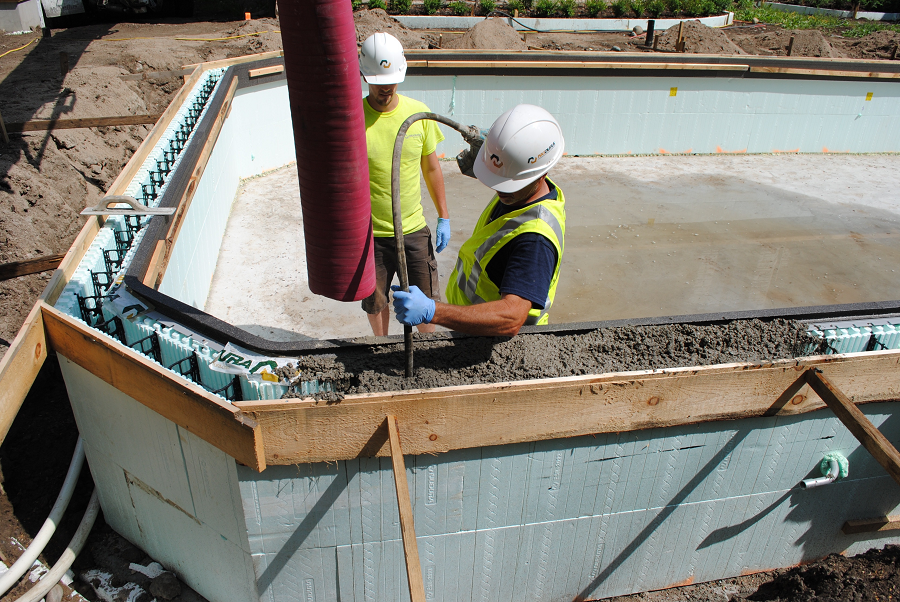Insulated concrete forms is a precast mold used to form concrete walls on site. Unlike most forms, an insulated form is left in place after the concrete hardens and becomes a permanent structure. This style of form improves the properties of the concrete wall, eliminating some of the deficiencies common to this type of structure. In addition to the concrete and forms, an insulated form will typically have reinforcing reinforcement to provide more stability to the material. However, unlike most formwork processes, this construction method does not offer a cheap and quick way to assemble simple buildings.
The use of concrete formwork is an ancient practice. Very little has changed in the process. First, traditional formwork is assembled on-site using pre-cut wood or plastic forms. Wood forms are generally used several times before they are damaged beyond repair, while plastic forms usually are helpful for a more significant number of uses. Next, rebar is placed in the states, one of the few differences between ancient and modern practices, and then concrete is slowly poured into the form.
Using this material, solid reinforced concrete structures are generated with a high degree of resistance to earthquakes and the strong winds caused by tornadoes and hurricanes.
In addition, these types of structures are highly flame resistant and can withstand dramatic fluctuations in ambient temperature.
ICFs are highly versatile and adaptable, so they can be used in retaining walls, high-rise buildings, swimming pools, cantilevered floors, columns, slabs, residences, schools, and commercial projects. Even with this material, it is possible to create safe rooms or shelters inside any construction to provide a habitable space. Thus, it is possible to find a safe refuge from any natural disaster or eventuality.
Each panel has a thickness of 63.5 mm, providing the necessary support for the reinforcement materials applied to shape a construction. During construction, the blocks are joined together without the need for mortar or adhesive, providing support and structure for the reinforcing materials applied later. As the blocks join together to form the wall, steel rods are placed inside vertically and horizontally. Once the rebar is set and the wall is assembled, the blocks are filled with concrete. This construction process intends to combine the strength and resistance of concrete and steel with the insulating capabilities of Expanded Polystyrene. Usually, the concrete is poured level by level.
Using insulated concrete forms and poured concrete makes it possible to construct a simple building in just a few days. The biggest time hurdle is pouring the concrete slowly enough for it to harden properly. If the material is run too fast, it will cause the form to buckle and destroy the wall. When the wall is fully set, the state is removed, and that piece is finished.
It should be noted that ICF is generally handled in sizes adaptable to various projects, and unique pieces are also used for corners or angled spaces. Some of the pieces are even entirely reversible.
All types of formworks are designed according to the structure they support, and the corresponding construction drawings specify the materials and thickness required. However, it is essential to keep in mind that the construction of the formwork takes time and can represent between 20 and 25% of the structural costs.


